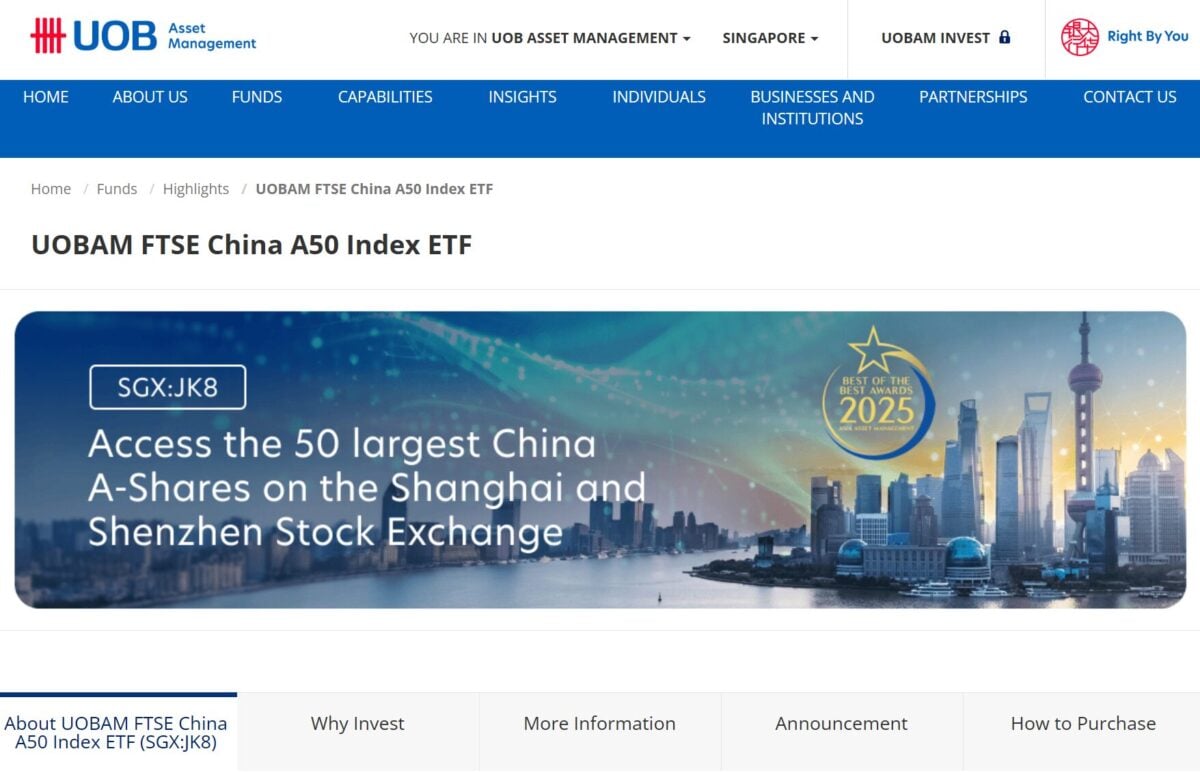So we received this question from a reader recently: Hi FH, I’m in my early 20s, just about to graduate university. I have about $1k in cash to invest, and I’m thinking of deploying it into US stocks. Any ideas how I should go about doing it? I’m interested in investing and want to learn […]
The post How I would Invest $1,000 in US Stocks in 2025? With Zero Commission, while earning DBS Multiplier interest + free USD30 Apple Share promotion appeared first on Financial Horse.
So we received this question from a reader recently:
Hi FH,
I’m in my early 20s, just about to graduate university.
I have about $1k in cash to invest, and I’m thinking of deploying it into US stocks.
Any ideas how I should go about doing it?
I’m interested in investing and want to learn more, but not sure where is the best place to start.
I’ve shared in previous articles that investing at different stages of life requires different mindsets.
My take is that when you are younger and investing smaller amounts, your primary goal is to build familiarity and confidence in investing, and you are also usually able to take on higher levels of risk.
When you are older and investing large sums, you tend to have more experience and knowledge, so the emphasis then shifts to generating good returns from investing, at an appropriate level of risk.
So how to invest $1,000 in US stocks, and what are the best strategies to consider?
Disclosure: This post is sponsored by DBS and POSB. All views and opinions expressed in this post are from Financial Horse.
If I were in my early 20s, and I’m looking to invest a sum of around $1,000 in US stocks?
The short answer would be that I would be active investing and using fractional investing.
Back in the day, a lot of these tools were not available (25 USD per trade + FX fees anyone).
So I really think young investors today should absolutely take advantage of all the options available to them today.
Let me discuss each point:
- Why fractional trading?
- Why active investing? What about passive investing?
At $1,000 sums or less, if you want to invest in US stocks, fractional trading is a really good option to consider.
This is because fractional trading allows you to buy fractions of a stock.
This is very useful in the US market where certain stocks have a high dollar value*:
- Microsoft ($421)
- Meta ($585)
- Adobe ($444)
- Netflix ($891)
- Eli Lilly ($772)
*updated 2 Jan 2025, in USD
At the base level, this means that you can access high-value stocks with minimal capital.
Additionally, fractional investing gives you the ability to purchase small portions of multiple stocks with limited funds.
To give a simple example, if you buy Netflix.
At 891 USD per share, that works out to about $1,216 SGD per share, i.e., more than the entirety of your portfolio.
Generally, from a risk perspective you’re looking to cap individual trades at around 5% of your portfolio (there are exceptions of course, but this is a general rule of thumb).
The benefit of fractional trading is that instead of being forced to put a large percentage of your portfolio into one single stock, you can size it any percentage you want.
This means you can curate your portfolio to the exact % that you want it.
You can spread your capital across more companies and sectors, creating a more diversified portfolio.
When investing smaller sums, fractional trading is an extremely useful tool you want to have in your toolbelt.
The reader who wrote in above is in his early 20s.
So if he uses DBS Vickers for fractional trading, the commission is free.
That’s a pretty good deal in my view.

For those above 25, the commission is a flat USD 0.96 per trade.

The other bonus, is that because this is DBS, all investments made with DBS Vickers count as an investment for DBS Multiplier.
This is a big plus point compared to other brokers, especially so if your cash is parked with DBS Multiplier (as is mine).

On to the second question – how to actually invest the $1,000?
At a high level, there’s 2 ways of doing it:
- Active Investing
- Buying a diversified portfolio of stocks
I know not everyone will agree with me.
But I think that if you’re in your early 20s, and you’re learning investing.
Trying to dabble a bit in active investing is probably the best thing you can do.
With DBS Vickers’ fractional trading and free commission for young investors, it’s a really good opportunity to start investing.
This is a good time for young investors to gather some practical experience in investing. Whether win or lose, these are valuable lessons to hone your investing experience.
You can make more investments as well across sectors and companies with fractional investing, and learn more about which areas or types of asset classes that you are comfortable with investing.
Even as more experienced investors, fractional trading is also useful as it gives you more flexibility for diversification, which is a useful form of risk management.
The universe of active investing is absolutely huge, so it’s about finding what works for you.
At a high level, there are different types such as:
Momentum plays – buying stuff that is going up on the thinking that it continues going up (eg. NVIDIA, or other stocks within MAG7).

All stocks shown in the screens are for illustration purposes only and do not represent any investment advisory.
Source: DBS Vickers Online Trading Platform, November 2024
Mean Reversion – buying stuff that is very oversold and trying to play the bounce (eg. Boeing, Starbucks, Nike).

All stocks shown in the screens are for illustration purposes only and do not represent any investment advisory.
Source: DBS Vickers Online Trading Platform, November 2024
Event-Driven Strategy – taking advantage of temporary stock mispricing, before or after a key corporate event takes place.
The possibilities in the investing space are endless.
And if you are in your early 20s with your entire investing life ahead of you, I would say don’t be afraid to go out there and explore.
Much better to explore (and lose money) now, than to do it 20 years later.
That being said, fundamental risk management is key.
As a general rule of thumb, you don’t want to risk more than 1.5 – 2.5% of your portfolio on any one stock.
With a $1,000 portfolio size (and without fractional investing), your portfolio may only consist of a couple of stocks. This means you run the risk of significant volatility in the performance of your portfolio if any one stock does poorly.
Whereas with fractional investing, you can position size each counter you own, to the % that matches your portfolio risk appetite.
Fractional investing is thus very useful when setting in place risk management principles for your overall portfolio.
The alternative to active stock-picking is of course, is to simply buy a diversified portfolio of stocks that you like.
As young investors, you could consider growth stocks, such as:
- Magnificent 7 stocks
- AI / Semiconductor stocks
- Biotech stocks
You can also consider ETFs if you want broad market exposure with low expense ratios.
For instance, the Vanguard S&P 500 ETF (VOO) tracks the performance of the S&P 500 index which offers investors a lower maintenance way to get diversified exposure to large US companies.
Check out the full list of stocks and ETFs eligible for fractional trading here.
Fractional trading comes in handy as well if you want to implement dollar-cost averaging strategies.
Instead of deploying the $1,000 at one go, you can make regular purchases for a much smaller dollar amount (and commission free for those under 25!).
This systematic approach helps manage market volatility.
Additionally, dollar-cost averaging keeps you on track with investing so you stay consistent towards your financial goals.
Fractional investing allows you to buy portions of expensive stocks like Google or Apple, and also allows you to add meaningful diversification to your portfolio even with smaller sums of capital.
You can own a share of the world’s biggest companies like META, NVDA and TSLA for just USD5.
Plus! Young investors (18 – 25 years old) can enjoy zero commission fees for your trades with the Young Investor Account.

From now till 31 March 2025, you can invest in the US stock market with DBS Vickers and receive US$30 worth of AAPL share when you fulfill the requisite steps.
FOR NEW ACCOUNT HOLDERS
Get US$30 worth of AAPL shares when you open a new individual account and make one online US buy trade!
1. Open a new individual online trading account from now till 31 March 2025
2. Make one online US trade before 30 April 2025
Terms and conditions apply. Click here to find out more.
FOR EXISTING ACCOUNT HOLDERS
Get US$30 worth of AAPL share when you trade online in the US market.
1. Make at least six online US trades, each trade executed with at least 1 share or more. (e.g. 1, 1.1234, 100, 100.0005)
2. Make the trades before 31 March 2025.
Terms and conditions apply. Click here to find out more.
You just need one application to set up both your DBS Vickers Online Trading Account and DBS Multiplier Account.
Everything is conveniently located on the DBS Vickers App as well.
Check out DBS Vickers today!
The content here is for informational purposes only and should NOT be taken as legal, business, tax, or investment advice. It does NOT constitute an offer or solicitation to purchase any investment or a recommendation to buy or sell a security. In fact, the content is not directed to any investor or potential investor and may not be used to evaluate or make any investment. Do note that this is not financial advice. If you are in doubt as to the action you should take, please consult your stock broker or financial advisor.
Disclosure: This post is sponsored by DBS and POSB. All views and opinions expressed in this post are from Financial Horse.
So we received this question from a reader recently: Hi FH, I’m in my early 20s, just about to graduate university. I have about $1k in cash to invest, and I’m thinking of deploying it into US stocks. Any ideas how I should go about doing it? I’m interested in investing and want to learn
The post How I would Invest $1,000 in US Stocks in 2025? With Zero Commission, while earning DBS Multiplier interest + free USD30 Apple Share promotion appeared first on Financial Horse.











